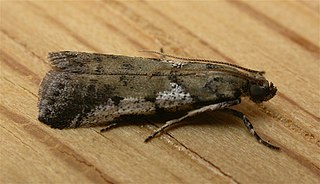
Macadamia is a genus of four species of trees in the flowering plant family Proteaceae. They are indigenous to Australia, native to northeastern New South Wales and central and southeastern Queensland specifically. Two species of the genus are commercially important for their fruit, the macadamia nut. Global production in 2015 was 160,000 tonnes. Other names include Queensland nut, bush nut, maroochi nut, bauple nut and Hawaii nut. In Australian Aboriginal languages, the fruit is known by names such as bauple, gyndl or jindilli and boombera. It was an important source of bushfood for the Aboriginal peoples who are the original inhabitants of the area.

Athertonia is a genus of tall trees, constituting part of the plant family Proteaceae. It is a monotypic taxon, and the sole described species is Athertonia diversifolia, commonly known as Atherton oak. It is a small to medium-sized tree and is endemic to restricted tablelands and mountainous regions of the wet tropics rain forests of north-eastern Queensland, Australia, where it is widespread. For example, it grows in the Atherton Tableland region with which it shares its name, from the colonial pastoralist John Atherton (1837–1913). Its closest relatives are Heliciopsis and Virotia. A relative of the macadamia, it has potential as an ornamental tree and has an edible nut.

Macadamia oil is the non-volatile oil collected from the nuts of the macadamia, a native Australian plant. It is used in food as a frying or salad oil, and in cosmetic formulations as an emollient or fragrance fixative.

Macadamia integrifolia is a small to medium-sized tree, growing to 15 metres in height. Native to rainforests in south east Queensland and northern New South Wales, Australia. Common names include macadamia, smooth-shelled macadamia, bush nut, Queensland nut and nut oak.

Assara holophragma is a species of moth of the family Pyralidae. It is found in Australia.
Assara albicostalis is a moth of the family Pyralidae. It has a wide distribution and has been recorded from India, Sri Lanka, Thailand, Sabah, the Philippines, Taiwan, Sulawesi, Australia, Fiji, Tahiti, Samoa, Hawaii and the Marquesas. This is the type species of genus Assara.
Assara cataxutha is a species of snout moth in the genus Assara. It was described by Alfred Jefferis Turner in 1947 and is found in Australia.
Assara chionopleura is a species of snout moth in the genus Assara. It is found in Australia.
Assara exiguella is a species of snout moth in the genus Assara. It was described by Aristide Caradja in 1926 and is known from China and Japan.
Assara inouei is a species of snout moth in the genus Assara. It was described by Hiroshi Yamanaka in 1994 and is known from Japan, Korea and China.
Assara leucarma is a species of snout moth in the genus Assara. It was described by Edward Meyrick in 1879 and is found in Australia.
Assara melanomita is a species of snout moth in the genus Assara. It was described by Alfred Jefferis Turner in 1947 and is found in Australia.
Assara microdoxa is a species of snout moth in the genus Assara. It was described by Edward Meyrick in 1879, and is known from Australia.
Assara odontosema is a species of snout moth in the genus Assara. It was described by Alfred Jefferis Turner in 1913 and is found in Australia.
Assara proleuca is a species of snout moth in the genus Assara. It was described by Oswald Bertram Lower in 1903 and is found in Australia.
Assara quadriguttella is a species of snout moth in the genus Assara. It was described by Francis Walker in 1866 and is found in Australia.
Assara semifictile is a species of snout moth in the genus Assara. It was described by Alfred Jefferis Turner in 1913 and is found in Australia.

Assara subarcuella is a species of snout moth in the genus Assara. It was described by Edward Meyrick in 1879 and is found in Australia.
Assara turciella is a species of snout moth in the genus Assara. It was described by Roesler, in 1973, and is known from Turkey.

Macadamia jansenii is an endangered and poisonous tree in the flowering plant family Proteaceae, native to Queensland in Australia. It was only described as a new species in 1991, being first brought to the attention of plant scientists in 1983 by Ray Jansen, a sugarcane farmer and amateur botanist from South Kolan in Central Queensland. Closely related to the cultivated and recently domesticated macadamia nut, it has small 11–16 mm diameter nuts that have a smooth, hard, brown shell enclosing a cream, globulose kernel that is bitter and inedible. In the wild it grows as a multi-stemmed 6–9m tall evergreen tree, with leaves having entire margins and generally in whorls of 3. An extremely rare species, it was discovered as a single population of around 60 plants in the wild in Eastern Australia. In 2018 about 60 new mature Macadamia jansenii trees were located, although a quarter of these were destroyed in the bush fires of 2019.







